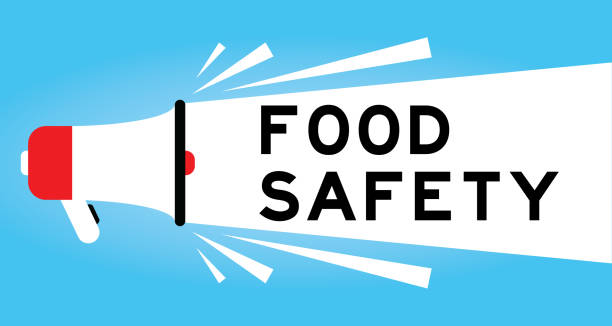Imagine you’re running a food packaging plant, and a major client—a big-name snack brand—drops an email demanding proof your materials meet strict safety standards. Your production line’s humming, but you’re sweating bullets, wondering if a single oversight could trigger a recall or tank the contract. Sound familiar? In the food industry, packaging isn’t just a wrapper; it’s a frontline defines against contamination. So, how do you prove your products are safe and keep those clients happy? That’s where ISO 22000 certification comes in—a gold standard for food safety that sets you apart. Honestly, who wouldn’t want to be the supplier everyone trusts?
Why Food Safety’s a Big Deal for Your Business
Let’s get real: Packaging for food isn’t just about looking pretty on a shelf. Your materials—think plastic trays, foil pouches, or paperboard cartons—touch the food people eat. One slip-up, like a chemical residue or a faulty seal, can spell disaster. The FDA reports over 1,000 food recalls annually in the U.S., with packaging issues causing a chunk of them. That’s not just a headache; it’s your product linked to a news headline nobody wants.
You know the pressure. Clients like Nestlé or Kraft aren’t just asking for quality—they’re demanding ironclad safety guarantees. A recall could cost millions, not to mention the hit to your reputation. And consumers? They’re savvier than ever, scanning labels and Googling brands before buying. As a packaging manufacturer, you’re not just making boxes; you’re guarding the food supply chain. ISO 22000 helps you nail that responsibility without breaking a sweat.
ISO 22000: Your Recipe for Food-Safe Packaging
So, what’s ISO 22000? Picture it as a recipe for keeping your packaging process safe from start to finish. It’s an international standard for food safety management systems, designed to ensure every step of your operation—from raw materials to finished pouches—meets strict safety rules. It’s not about piling on regulations; it’s about building a system that catches risks before they become problems.
Here’s why it’s perfect for you: ISO 22000 isn’t just for food processors—it applies to packaging manufacturers, too. It focuses on hazards like chemical migration (say, from inks) or physical contaminants (like machine debris). It’s like having a checklist that ensures your materials are food-safe, no matter who’s buying. Whether you’re making clamshells for berries or wrappers for chocolate bars, ISO 22000 keeps your process tight and your clients confident.
The Perks That Make It Worth Your While
You’re probably thinking, “Sounds good, but what do I get out of it?” Fair question. ISO 22000 certification isn’t just a pat on the back—it’s a tool that boosts your business in ways that matter. Here’s the rundown:
- Client Trust: Certification proves your packaging meets global safety standards. That’s a game-changer for landing or keeping contracts with big players like PepsiCo or Unilever.
- Fewer Risks: A solid safety system cuts the chance of recalls or contamination. One packaging firm avoided a $2 million recall by catching a sealant issue early.
- Market Edge: Stand out in a crowded field. Certified suppliers are often preferred for tenders, especially in Europe, where food safety rules are tight.
- Smoother Audits: ISO 22000 aligns with regulations like FSMA in the U.S., making compliance a breeze. No more scrambling for paperwork.
Quick side note: Food safety isn’t just about avoiding disasters—it’s about building loyalty. When your clients know your packaging is rock-solid, they stick with you. Think about it: A snack brand that trusts your wrappers isn’t just a customer; they’re a partner who raves about you to others. That’s the kind of ripple effect ISO 22000 creates.
Getting Certified: It’s Not as Tough as You Think
Let’s talk about the certification process. I know “certification” might sound like a mountain of paperwork or a production line shutdown, but let me explain—it’s more like fine-tuning your operation than starting from scratch. Here’s how it works, like I’m walking you through it over lunch:
- Spot the Risks: Start with a hazard analysis. Check your materials, machines, and processes for risks—like chemical leaching or cross-contamination. Tools like HACCP software can help.
- Build Your System: Create a food safety policy tailored to your plant. Maybe it’s stricter ink testing or better cleaning schedules. It’s about what fits your setup.
- Train Your Team: Get everyone—from line workers to quality control—on board with safety practices. Keep it engaging, like quick toolbox talks with real examples.
- Pass the Audit: An external auditor reviews your system against ISO 22000 standards. They’re there to guide, not grill you. Pass, and you’re certified.
- Keep It Up: Certification lasts three years, with check-ins to stay sharp. It’s like routine equipment maintenance—small effort, big payoff.
Worried about cost or complexity? I hear you. For a mid-sized packaging plant, certification might cost $10,000-$20,000 and take 6-12 months, depending on your starting point. But the payoff—fewer risks, happier clients—often kicks in fast. One manufacturer recouped their investment in a year through new contracts. It’s not a hurdle; it’s a smart play.
Why Now’s the Moment to Jump In
Here’s the thing: There’s no better time to get ISO 22000 certified. Food safety regulations are getting stricter—think the EU’s updated FSSC 22000 rules or FDA’s tougher FSMA audits. Consumers are hyper-aware, too; a 2025 Nielsen survey found 75% of shoppers check for “safe packaging” claims. And with holiday demand spiking—think gift baskets and party platters—your clients need reliable suppliers now more than ever.
Plus, trends are on your side. Digital tools like TraceGains or FoodLogiQ make tracking safety data easier. Sustainability’s also hot—ISO 22000 pairs well with eco-friendly packaging, giving you a double win. Why wait when the market’s rewarding safe, smart suppliers? Certification puts you in the driver’s seat.
Your First Step Toward Food-Safe Excellence
So, what’s the bottom line? ISO 22000 certification isn’t just about dodging recalls—it’s about building a business that clients trust and regulators respect. For food packaging manufacturers, it’s a chance to cut risks, win contracts, and stand out in a packed market. You’re not just making wrappers; you’re safeguarding the food people love.
Why let risks or regulations hold you back? With ISO 22000, you’re not just meeting standards—you’re setting them. Grab that edge and make your mark today.



